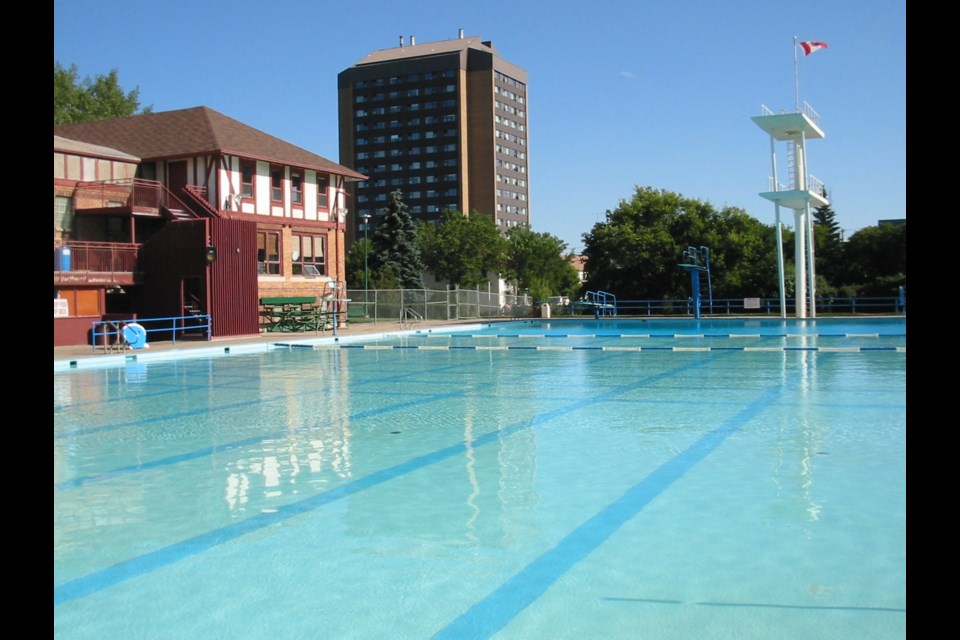A new high-service reservoir and pump house, an outdoor swimming pool and transit infrastructure are three projects worth nearly $22 million that city council is pushing to receive federal funding.
The reservoir and pump house are projected to cost $16 million; an “outdoor aquatic facility” is pegged at $3.75 million; and transit infrastructure is worth more than $2 million.
During its April 22 regular meeting, city council voted unanimously to submit the projects to the federal 2019 Investing in Canada Infrastructure Program (ICIP).
ICIP provides more than $896 million over 10 years for projects in Saskatchewan. The projects have to fall under one of four infrastructure categories: public transit, green, community, culture and recreation, and rural and Northern communities.
City administration has to submit the projects for evaluation before the April 30 deadline. The provincial government — which oversees the ICIP funding — will evaluate them and then inform municipalities within a year if their projects have been approved.
“It’s important to have projects in the queue. They stand a much better chance of getting approval, especially if they are shovel ready,” city manager Jim Puffalt told council.
High-service reservoir and pump house
The project would replace the pump station entirely with a new building and equipment, piping and valves. Equipment from the existing chlorine dosing plant would be relocated into a new chlorine room at the new pump station.
The building is expected to last at least 20 years, according to a council report. It would be designed to meet the needs of a population of 45,000 people.
The high-service reservoir has two chambers with a total storage capacity of 27 megalitres. This is equivalent to 27 million litres of water, or 11 Olympic-sized swimming pools.
Outdoor aquatic centre
The Phyllis Dewar Outdoor Pool is 53 years old and is experiencing problems that could force the municipality to close the pool. Mechanical components have reached the end of their life and major maintenance is regularly required to keep them operational.
The parks and recreation department reviewed similar outdoor pool projects in Saskatchewan, Puffalt’s report said. The department received some preliminary pricing costs for a new design-build outdoor aquatic centre in Moose Jaw.
Transit infrastructure
The federal government notified the municipality it would receive $6,090,050 under the public transit infrastructure stream. One-third has to be spent on transit projects, while the remaining two-thirds can be transferred to green projects.
City administration decided to spend $2,075,000 on:
• Replacing two paratransit buses at $240,000 each
• Purchasing three new conventional buses at $575,000 each
• Upgrading bus shelters for $110,000
Of the remaining funds, $2,954,150 would be transferred to the cast iron water main replacement project for 2020, while $1 million would be used to install solar panels on four municipally-owned buildings for $250,000 each.
“For $250,000, we’d be able to generate $80,000 a year in electrical savings through power generation,” Puffalt said. “So it’s a pretty exciting program. We have lot of work to do to get this (fleshed) out … it moves us closer to becoming carbon neutral, which should be our goal as we move forward.
“The cast iron could (also) use every dollar we can get for it.”
Council discussion
Coun. Brian Swanson’s preference was to take $3.95 million of the transit funding and direct it toward the cast iron water main project, since that would save money in the long-term.
He pointed out council isn’t funding this program as if it were a 20-year project. Council could see major savings over the years by reducing the number of repairs needed to water lines.
Swanson introduced an amendment to eliminate the solar project and direct the funding into the cast iron program. Council voted 5-2 against that amendment, with Swanson and Coun. Scott McMann in favour.
City administration and council usually face challenges with transit funding, especially with how the federal government hands out that money, said Mayor Fraser Tolmie. It normally provides transit funding to the bigger Canadian cities since they have established transit programs with many riders.
“This opportunity presenting itself is a good thing,” he added.
Putting $2.9 million into the cast iron program is a good thing since there are breaks that need fixing, Tolmie continued. The municipality is relining underground pipes this year versus digging up the roads and installing new PVC pipes.
“But I don’t think we should miss out on the solar incentives that are presenting themselves,” he added, especially since the cost of solar panels are decreasing.
More money should go to the cast iron project, said Coun. Heather Eby. However, she would have preferred if council adopted a solar panel pilot project for $250,000 and put $750,000 into the cast iron replacement.
“I do think it is important for us to be forward looking,” she added.
The next regular council meeting is Monday, May 13.




